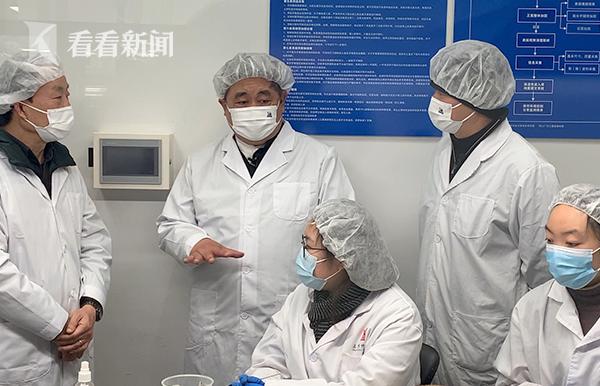On December 20th, Shan Jixiang, president of the Chinese Cultural Relics Society and director of the Academic Committee of the Palace Museum, and well-known actors Zhou Yun, Xiao Yang and Niu Junfeng came to the Guanghan Sanxingdui Museum to shoot the program "Ten Thousand Miles of Single Riding - China in Heritage" to explore the ancient Shu civilization that has lasted for more than 4,000 years.
Since the end of last year, a new round of archaeology of the sacrificial pit in Sanxingdui has emerged, and many new excavations have emerged, and a large number of relics of the ancient Shu civilization have been unearthed. In this regard, Shan Jixiang said that when he came to Sanxingdui this time, he felt the cultural connotation of these cultural relics to the Sanxingdui ruins and the value of the ancient Shu civilization was very high. "We have seen that archaeology and cultural relics protection work has adopted a multi-team collaboration approach, the best experts from all over the country and the best archaeology and cultural security personnel have participated in it, and the latest high-tech and technology have also been used, excavation and protection research and display and utilization have been carried out simultaneously, I am very much looking forward to the archaeology and cultural protection work can achieve greater results; at the same time, I see that the provincial and municipal local governments at all levels attach great importance to Sanxingdui and the ancient Shu civilization, and the Sichuan Provincial Cultural Relics Bureau has made great efforts in the cause of cultural heritage protection, I am very moved. With the full cooperation of all sectors of society, our precious cultural heritage will certainly be able to protect it. This time, "Ten Thousand Miles of Single Riding" came to Sanxingdui and Jinsha to promote cultural heritage and the value of ancient Shu civilization. ”

During the Guanghan Period, Shan Jixiang visited the Sanxingdui site and the Jinsha site respectively, walked into the archaeological greenhouse of the Sanxingdui excavation cabin, and personally lay down on the operating platform to feel the modern archaeological "black technology".
In front of the bronze sacred tree of the town hall treasure of the Sanxingdui Museum, the leader of the Sanxingdui site excavation team, Lei Yu, introduced that in the early Bronze Age, large combination bronzes were very rare, but Sanxingdui was rich in this type. Xiao Yang then quipped, "This is the lego of the ancient Shu people", which made everyone laugh. In fact, the original excavation status of the bronze artifacts at the Sanxingdui site can be described as "tragic", the cultural relics in these sacrificial pits were artificially crushed and burned before burial, and the deformation and fragmentation of the artifacts were quite serious, causing great difficulties in restoration. As the largest bronze artifact unearthed in China, the restoration of the bronze sacred tree lasted 8 years.
Three days ago, on December 18, the Sanxingdui site and the Jinsha site officially signed a joint application for heritage, which is the first archaeological site project in Sichuan to be declared a World Heritage Site. In this regard, Shan Jixiang said that the Sanxingdui site and the Jinsha site have been jointly included in the "Preliminary List of China's World Cultural Heritage" as the "Ancient Shu Civilization Site" project. In recent years, a lot of new evidence has been unearthed and many new results have been produced, which have greatly helped to refine their connotation and value.
Shan Jixiang said that the current excavation of sanxingdui and jinsha sites only accounts for a small area in the overall area of the site, and the application for heritage does not have to wait for all the ruins to be excavated before declaring. Shan Jixiang believes that now that Sanxingdui and Jinsha have jointly applied for heritage, the qualifications are sufficient and sufficient, and it is necessary to continue to do more work in the declaration process and data preparation, dig deep into the cultural connotation of Sanxingdui and Jinsha sites, and build a clearer picture of ancient Shu civilization through the systematic collation of various discoveries in the site area. The joint application of Sanxingdui and Jinsha is not "1+1=2", but a more complete presentation of the ancient Shu civilization through the superposition of cultures. Shan Jixiang said: "The world heritage is not privately owned by any country or region, it is the common heritage of all mankind, and it is necessary to compare and study with other civilizations of the same period in the world from the perspective of the whole world, revealing the outstanding universal value of the ancient Shu civilization." We should strengthen the display and use on the basis of protection, so that more people can benefit from heritage protection. ”
It is reported that the program "Ten Thousand Miles of Walking Alone - China in heritage" was initiated by the Chinese Cultural Relics Society, and in February this year, it visited the Qingcheng Mountain - Dujiangyan World Double Heritage in Sichuan. Shan Jixiang came to Sichuan again because of his visit to Sanxingdui and Jinsha this time, and the former president of the Forbidden City, who claimed to be the gatekeeper of the Forbidden City, said, "With the cooperation of all sectors of society, our precious cultural heritage will certainly be able to protect it." This time, when I came to Sanxingdui, we should reveal the value of the ancient Shu civilization by publicizing cultural heritage. ”
(Look at the news Knows reporter: Peng Ye, You Mingling, intern editor: Fan Shiyan)